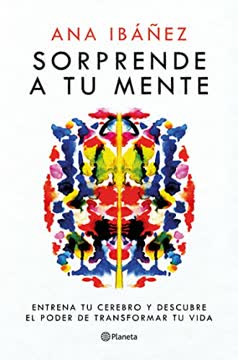Key Takeaways
1. Mind Change Isn't Sudden, It's Gradual.
Instead, Gardner shows, we change our minds gradually, in identifiable ways that can be actively and powerfully influenced.
Beyond Epiphany. We often think of changing minds as a sudden "aha!" moment or epiphany, but this is rarely the case for significant shifts. Like Nicholson Baker realizing over years he no longer wanted forklift furniture, major changes in perspective or behavior typically happen slowly, almost imperceptibly.
Subtle Processes. Even seemingly abrupt changes, like Saul's conversion on the road to Damascus, often mask subtle, subterranean processes that have been developing over a long period. These gradual shifts can be influenced, but they are not usually instantaneous transformations.
Observable Ways. Mind change occurs in identifiable ways that can be studied and understood. By examining these processes, we can learn how to actively and powerfully influence changes in our own minds and the minds of others, moving beyond the mysterious notion of sudden shifts.
2. Seven Levers Drive or Resist Mind Change.
I have identified seven factors—ranging from reason to resistance—that operate either individually or jointly to bring about or thwart significant changes of mind...
The "Re" Factors. Changing minds is influenced by a set of seven key factors, all conveniently starting with "Re". These levers can work together to facilitate change or act as barriers against it.
Facilitating Change:
- Reason: Logical arguments and analysis.
- Research: Data, evidence, and systematic inquiry.
- Resonance: Ideas that feel right or connect emotionally.
- Representational Redescriptions: Presenting ideas in multiple formats.
- Resources and Rewards: Incentives, support, and positive reinforcement.
- Real World Events: External occurrences that shift perspectives.
Resisting Change: The seventh factor, Resistance, actively works against change. Understanding these resistances is crucial for overcoming them. Mind change is most likely when the first six factors align and resistances are weak.
3. Early Beliefs Are Powerful and Sticky.
While it is easy and natural to change one's mind during the first years of life, it becomes difficult to alter one's mind as the years pass.
Childhood Paradox. Young minds are incredibly flexible, easily absorbing new information and dramatically altering their understanding of the world (like Piaget's conservation tasks). Yet, they also form powerful, intuitive theories early on that are surprisingly resistant to change later in life.
Intuitive Theories. Children develop "common sense" theories about matter, life, mind, and human relations (e.g., heavier objects fall faster, things that move are alive, bigger people are powerful). These theories, while often flawed, feel right because they are based on early sensory experience and cultural reinforcement.
Entrenched Views. These early theories become deeply ingrained, like engravings in the mind/brain. Even formal education struggles to dislodge them; students may mouth the correct answers but revert to their intuitive theories when tested outside the classroom. Emotional commitment, public pronouncements, and personality traits like rigidity further strengthen these resistances.
4. Multiple Formats Unlock Understanding.
Presenting multiple versions of the same concept can be an extremely powerful way to change someone's mind.
Beyond Words. Ideas, concepts, stories, theories, and skills (the "contents" of the mind) can be represented in many different forms or formats, not just language. These formats correspond roughly to our different intelligences (linguistic, logical-mathematical, spatial, musical, bodily-kinesthetic, naturalist, interpersonal, intrapersonal, existential).
Representational Redescription. A key lever for changing minds is presenting the same content in multiple, compatible formats. This "representational redescription" helps ideas resonate with different individuals who may favor different ways of processing information.
- The 80/20 principle can be shown with numbers, graphs, or cartoons.
- Scientific theories can be explained through narrative, data, logic, or hands-on models.
Increased Reach and Depth. Using multiple formats not only reaches a wider audience (appealing to different intelligences) but also deepens understanding. When an idea can be grasped through various lenses, it becomes more robust and less likely to be dislodged.
5. Leaders Change Minds Through Stories and Embodiment.
To change minds effectively, leaders make particular use of two tools: the stories that they tell and the lives that they lead.
Narrative Power. Leaders of large, diverse populations, like national politicians, primarily change minds by telling compelling stories. These stories must be simple, relatable, emotionally resonant, and evoke positive experiences to compete with existing "counterstories" in the public mind.
Embodying the Message. A leader's credibility hinges on whether their life and actions embody the story they tell. Margaret Thatcher's rise from modest means and her displays of courage reinforced her narrative of Britain's potential for resurgence. Conversely, Newt Gingrich's personal life undermined his calls for family values and limited government.
Resonance is Key. The success of a leader's story depends heavily on its resonance with the audience. It must tap into their existing feelings, aspirations, and sense of identity. Leaders who can connect on this visceral level, often through a "cool" persona that allows projection, are more likely to effect lasting change than those who are merely "hot" or overly explicit.
6. Indirect Influence Comes from Created Works.
But major changes of mind also may be wrought by the works that a person creates rather than by his or her direct words or acts.
Beyond Direct Address. Scientists, scholars, artists, and inventors often change minds not through public speeches but through the impact of their creations. Charles Darwin's Origin of Species, Albert Einstein's theories, Pablo Picasso's Guernica, or Martha Graham's dances altered how people understood the world or what was possible in an art form.
Focus on Content and Form. Unlike leaders who rely on stories, indirect influencers often work with theories (scientists/scholars) or new practices/sensibilities (artists). They leverage specific intelligences tied to their domain (logical-mathematical for scientists, spatial/bodily for artists) and introduce new forms of representation within their medium.
Overcoming Resistance. Acceptance of groundbreaking work often faces significant resistance, especially from established figures. Success depends on factors like the accumulation of evidence (Darwin), acceptance by key experts (Einstein), the work's resonance with the spirit of the era (modernist artists), and the ability to neutralize or even strategically use resistance (Freud, Gilligan, Harris).
7. Formal Education Targets Disciplinary Thinking.
Schools stand out because they serve those young individuals whose minds can most readily be changed; they fashion curricula to convey disciplines that crystallize the current state of knowledge; and they have responsibility for monitoring how, and to what extent, the minds of students have in fact been changed.
Cultivating Unnatural Thinking. Schools are institutions explicitly designed for mind changing. They socialize children into "out-of-context" learning, teach literacies (print, visual, digital), and, crucially, aim to cultivate disciplinary modes of thinking (science, history, math, arts).
Counterintuitive Disciplines. Disciplinary thinking is often deeply counterintuitive, clashing with early "unschooled" theories (e.g., Galileo's physics vs. intuitive motion). Mastering these modes requires years of guided application, confronting misconceptions, and deep immersion in rich examples (like Darwin's finches or Mozart's Figaro).
Leveraging Multiple Entry Points. Effective disciplinary teaching relies heavily on representational redescription. Presenting concepts through narrative, quantitative data, logic, aesthetic forms, hands-on activities, and social interaction helps students grasp complex ideas and appreciate that experts think about topics in multiple ways.
8. Intimate Connections Rely on Resonance.
Ultimately, however, resonance is key: Does Erikson's dream interpretation make sense to the seminarian on a visceral level?
Close-Up Influence. In intimate settings like families, friendships, therapy, or romantic relationships, mind change is directed at just one or two individuals. Success here depends less on mass rhetoric and more on deeply understanding and connecting with the other person's psyche.
Creating Resonance. The key lever in intimate mind changing is creating resonance. This involves establishing common ground, engaging in shared activities, fostering give-and-take, and being attuned to the other person's emotional state and preferred ways of thinking (their "scripts" and "forms").
Therapeutic Example. Erik Erikson's interpretation of a seminarian's dream worked because it resonated deeply, crystallizing swirling unconscious themes. It wasn't just the logical analysis but the emotional fit that created a tipping point, illustrating how intimate mind change is a nuanced, craft-like undertaking beyond simple persuasion.
9. Changing Your Own Mind Requires Self-Awareness.
Our own minds are changed—either because we want to change them or because something happens in the real world or in our mental life that warrants a major change.
Internal Shifts. We change our own minds due to conscious effort, internal reflection, or external triggers. These shifts can be gradual (like changing political views over time) or dramatic (like George W. Bush's perspective shift after 9/11).
Intrapersonal Intelligence. Changing one's own mind effectively requires developing intrapersonal intelligence – a good working knowledge of oneself, including strengths, weaknesses, goals, and how one processes information and reacts to events. This self-awareness allows for monitoring and deliberate change.
Confronting Beliefs. Significant personal mind changes, especially in value-laden areas like politics or religion, often involve confronting deeply held beliefs and the reasons for them. While difficult, acknowledging errors (like Whittaker Chambers leaving Communism) or adapting to new realities is crucial for personal growth, even if publicly admitting change is rare.
10. Technology Will Transform Mind Changing (Wetware/Dryware).
In the coming decades, mind changing will continue and, in all probability, accelerate.
Wetware Interventions. Future mind changing will increasingly involve direct interventions on our "wetware" (brains and genes). Advances in neuroimaging, neural manipulation (drugs, transplants), and genetic engineering may allow us to directly alter cognitive abilities or even specific mental representations, moving beyond traditional behavioral training.
Dryware Influence. "Dryware" (information systems and artificial intelligence) is already changing our minds through personalized interactions, educational software, and hypermedia. Future AI, capable of semantic processing and understanding individual cognitive profiles, will become even more deeply intertwined with our mental lives, influencing how we learn, decide, and even feel.
Blurring Boundaries. The lines between biological and computational systems are blurring (e.g., genetic algorithms, computational neuroscience). Future mind change will likely involve intricate amalgams of wetware and dryware, reordering information in the human psyche in ways previously unimaginable.
11. The Ethics of Mind Changing Matter (GoodWork).
Looking forward, we may ask whether it may be possible to change minds so that excellence and ethics are more closely allied.
Value-Neutral Tools. The levers and processes of mind changing are value-neutral; they can be used for good, bad, or indifferent purposes. Leaders can inspire war or peace, education can indoctrinate or enlighten, intimate influence can be constructive or destructive.
GoodWork Standard. We need to consider the ethical dimension of mind changing. "GoodWork" is technically excellent work that also seeks ethical outcomes. Becoming a GoodWorker involves understanding one's professional mission, learning from positive and negative models, and regularly passing the "mirror test" of ethical self-reflection.
Responsible Influence. As technology increases our capacity for mind change (wetware, dryware), the ethical stakes rise. We must strive to use these tools and processes to encourage GoodWork and discourage compromised work, ensuring that the acceleration of mind change serves life-enhancing rather than destructive ends.
Last updated:
Review Summary
Changing Minds receives mixed reviews, with an average rating of 3.59/5. Some readers find it insightful and informative, praising Gardner's analysis of mind-changing processes across various societal levels. However, many criticize the book for being overly verbose, academically dry, and lacking practical advice. Critics argue that the content is repetitive, with useful information confined to a small portion of the book. Some reviewers appreciate Gardner's examples and theoretical framework, while others find the anecdotes irrelevant or outdated. Overall, opinions are divided on the book's value and relevance.
Similar Books









Download PDF
Download EPUB
.epub digital book format is ideal for reading ebooks on phones, tablets, and e-readers.










